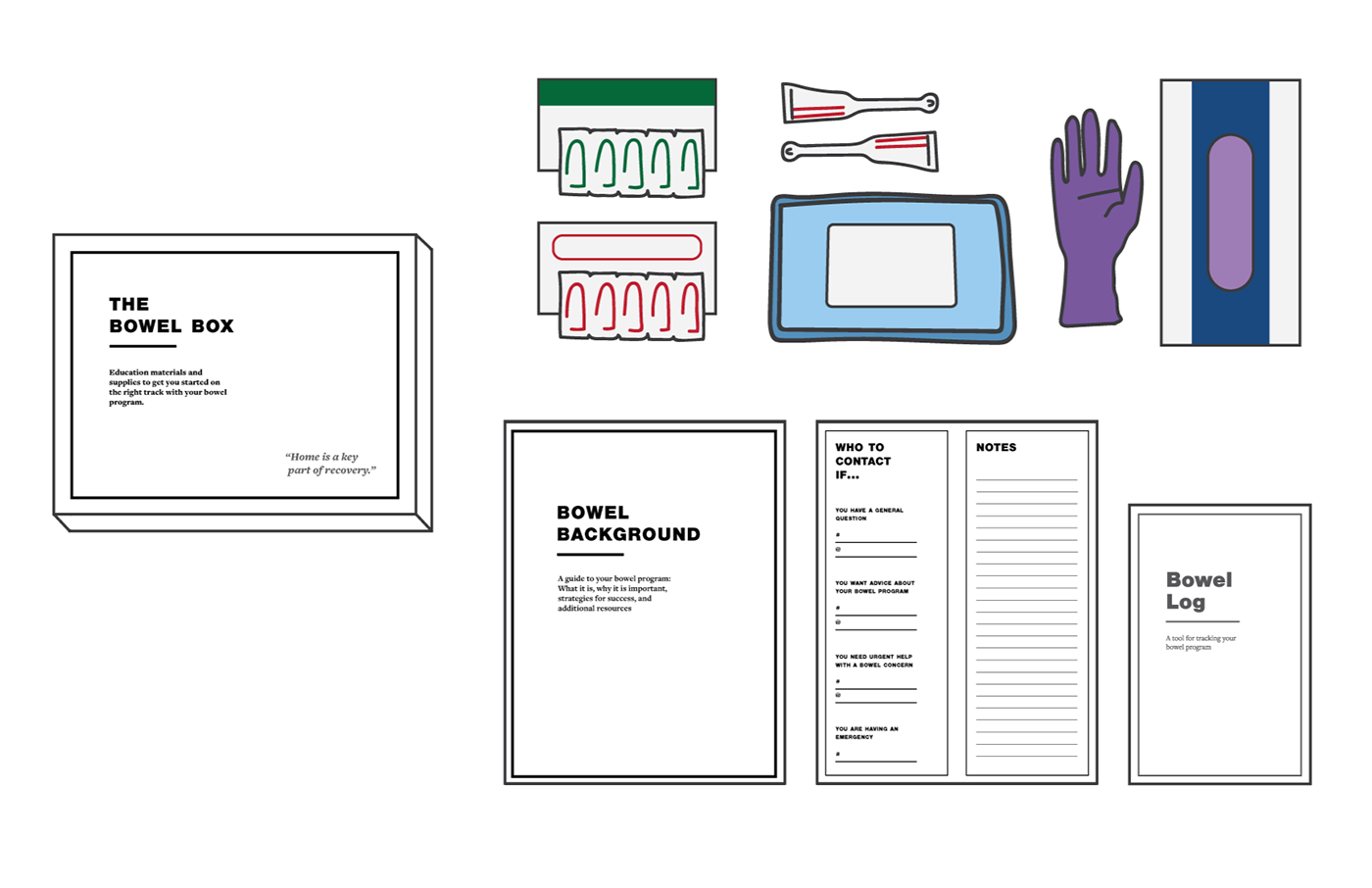Bowel Box:
New educational materials for bowel management after spinal cord injury.
View the full project at aidanhudsonlapore.com.
Loss of voluntary bowel function is one of the most significant complications of a spinal cord injury, and also one of the least talked about. New patients must learn a bowel management program in order to avoid unplanned bowel movements, which significantly impact quality of life.
The Bowel Box is a reimagination of the educational materials provided to spinal cord injury patients when they are discharged from hospital to home. It provides patients and their families with the guidance and supplies they need to ease the transition and adjust more quickly to their new normal.
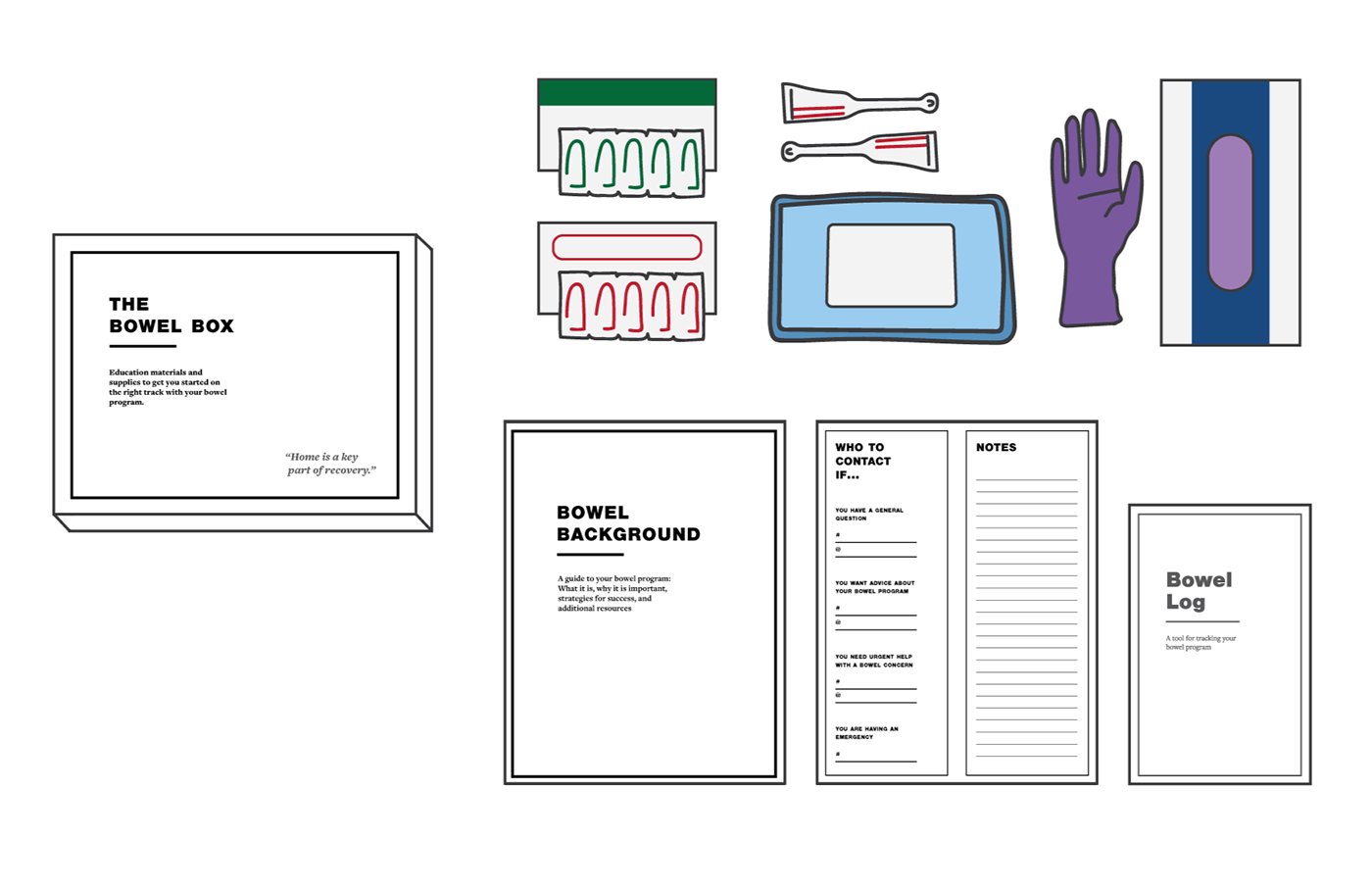
Details:
The box:
All materials and supplies are packaged in the bowel box and given to the patient and family when they are discharged from the hospital or rehabilitation facility.
The box format distinguishes this important information from the many other educational materials patients and family receive throughout treatment, and gives this intimate topic a more personal touch.
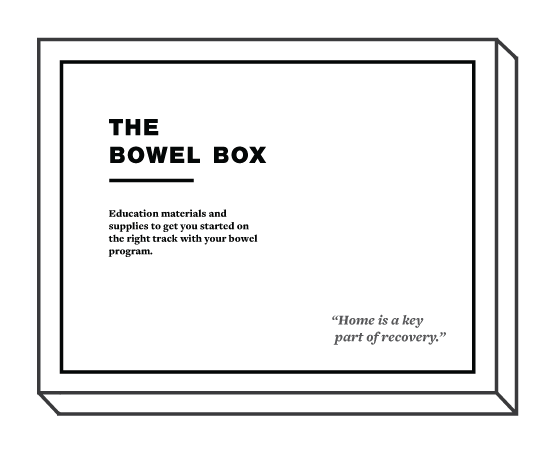
Starter supplies:
The bowel box comes packaged with samples of suppositories and mini-enemas to help the patient quickly learn what products work best for them. A week’s supply of exam gloves and blue pads means patients and family don’t have to worry about ordering bowel supplies immediately after getting home.
The transition to home is a stressful time for both patients and caregivers, and a sense of connection to the hospital can demonstrate provider support and help relieve anxiety.
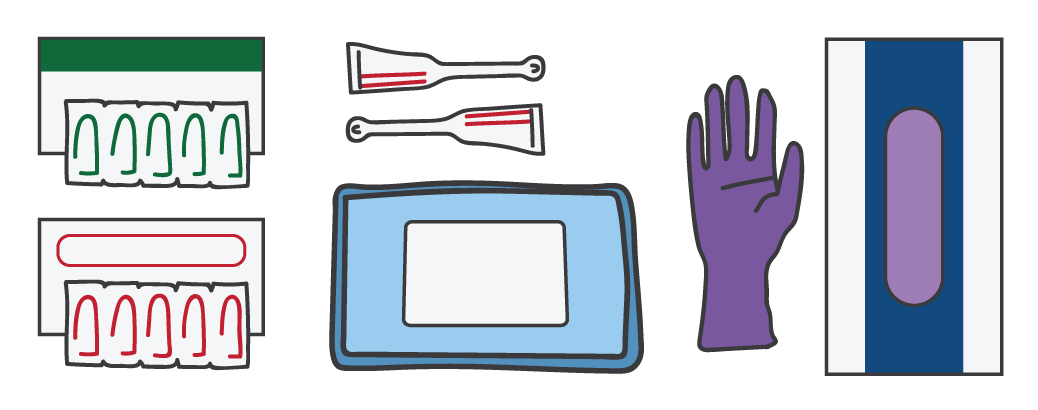
Important information:
The bowel box includes a booklet that covers all the information required to first perform and learn to manage the bowel program. A contact information sheet gives specific contact information for a range of issues and questions that can come up during the transition. The bowel log helps patients and family track what habits and medications result in the most efficient and effective bowel program.
Over the course of treatments and rehabilitation, patients and caregivers are given more information than they can fully absorb. Clear, specific take-home materials give patients and caregivers confidence to manage their new normal.

Booklet details:
These redesigned booklets incorporate content from many existing bowel management resources. I researched existing materials and synthesized them to make sure that the information in these booklets is medically accurate and comprehensive.
I restructured the information and filled in gaps according to the content I saw being addressed by current wheelchair users when giving advice to new patients about how to best manage the bowel program.
Contact information:
The transition to home can be overwhelming for patients and family members, who often worry that something will go wrong.
This sheet gives patients and family members the information they need to know who to contact for various concerns. People often do not know the best person to call when.
Providing a closer connection with the providers can be comforting even if it is ultimately not needed.
Bowel Log:
The bowel log is a tool to help patients and family members track the factors that influence their bowel program.
Keeping track of what habits contributed to an efficient and effective bowel program helps patients learn more quickly and troubleshoot if something goes wrong.
Bowel Background:
The Bowel Background booklet contains all the necessary background information wheelchair users and families need to establish a successful bowel program.
Key features:
- Page numbers and table of contents improves navigation.
- Clear section headings are easy to see when flipping through the book. Illustrations of and quotes from veteran wheelchair users gives a more personal and encouraging feel during a stressful and isolating time.
- Visual instructions support patients or family members when first learning how to perform the program.
- Covers specific medications and where to purchase them.
- Explains adaptive methods to facilitate independence.

Process:
Preliminary Research
This was an independent, semester-long project for my wheelchair design studio. I conducted secondary research to orient myself to the problems faced by wheelchair users and identified bowel management as a major concern for new patients. This educational set is designed to address the gaps I identified during my research, and incorporates feedback from two wheelchair users, a caregiver, and an occupational therapist.
Sources:
1 VA occupational therapist, 2 wheelchair users, 1 caregiver, articles and videos by wheelchair users, web resources for new patients.

Step 1: Background research
Orient myself to wheelchairs, including how and why people use them. Identify opportunities.
Online readings, site visit to VA hospital, text and video resources for new patients and families.
Step 2: Identify interest
I identified people with spinal cord injuries (SCI) as my user group, since the time of transition is sudden and emotionally fraught.
Online readings, text and video resources for new SCI patients and families.
Step 3: Definite problem
The resources for new patients consistently referenced bowel management as a challenging issue for new patients and their families both immediately after injury and long-term management.
Videos by veteran wheelchair users, current bowel management resources.
Step 4: Focused research
Review existing educational resources, strategies and experiences of veteran wheelchair users, impact of the bowel program on quality of life.
Videos by veteran wheelchair users, current bowel management resources, survey and interview wheelchair user.
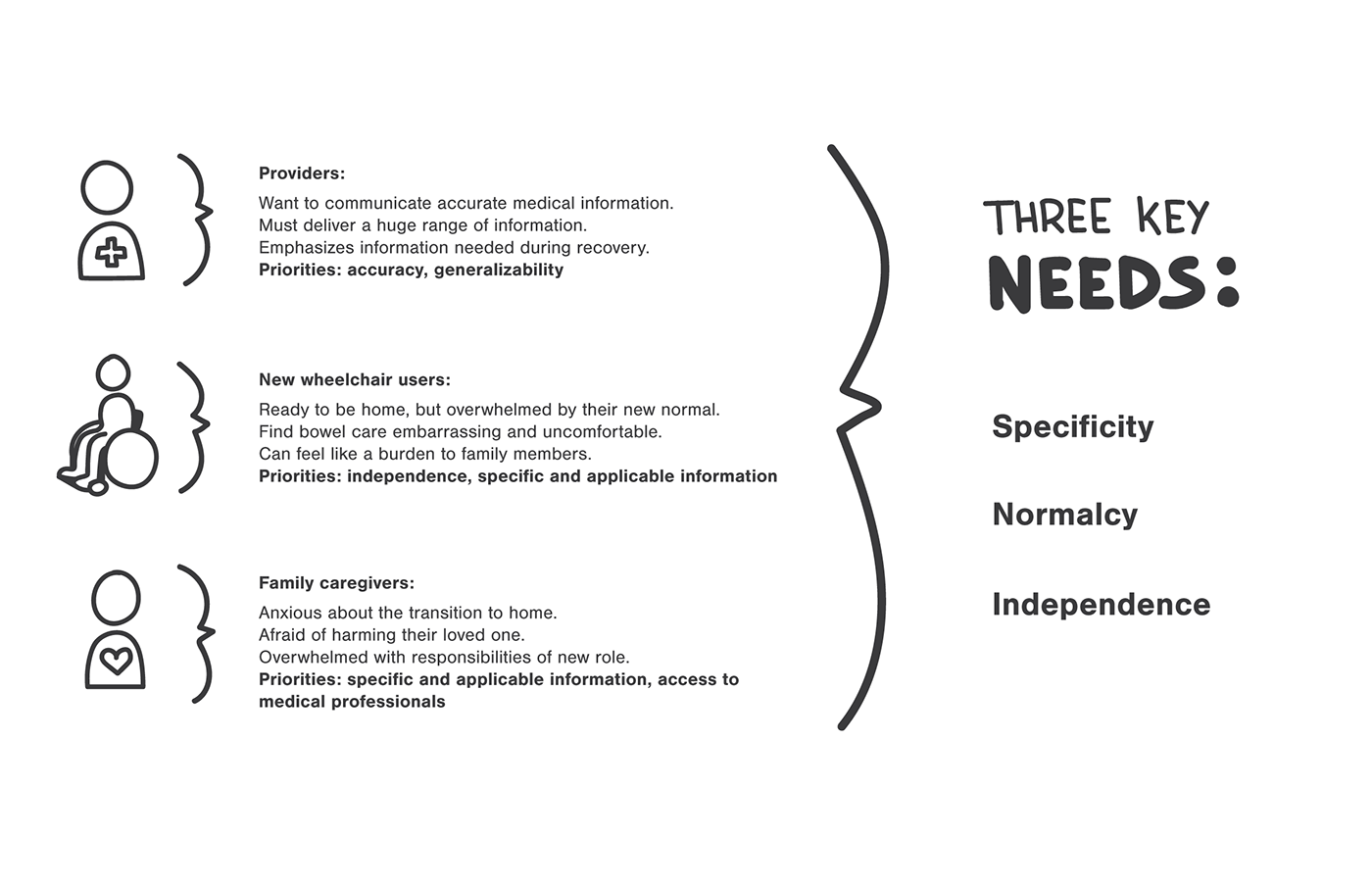
Insights:
There is need for more detail about how to perform the bowel program than is discussed in the current education materials offered by the hospital or rehabilitation center.
Youtube had many videos uploaded by people with spinal cord injuries that walked through the steps they took to perform their program. The uploaders mentioned the importance of the topic and how rarely it is candidly discussed. They referenced specific products and positions that were most effective for them.
Bowel care is an emotionally difficult topic, and can strain relationships when a family member is acting as a caregiver.
Existing educational materials did not discuss how to best manage this difficult topic with family, friends, and employers.
People are strongly motivated to learn to manage their bowel program independently.
The current educational materials assumed that quadriplegics would require assistance performing their bowel program, but many videos were from quadriplegics demonstrating strategies for performing their program independently.
Initial concept:
My research revealed a clear need for a more personal and thorough set of educational materials for the bowel program.
I decided to explore the idea of having a bowel kit, because it would be able to deliver supplies as well as educational materials, and also because it seemed more like a gift, which fits the personal nature of the bowel program and the need of new patients and their families to feel more connected to the hospital through their transition to home.

Critique and refinement:
When I presented my first draft to a wheelchair user and his caregiver, they made several important critiques.
1. The many booklets would be difficult to keep track of among the suite of educational materials provided upon discharge to home.
2. The text is dense, and there is no way to find an answer to a specific question other than skimming through the text.
3. Though the illustrations were a good first step, more would be better.
4. The single-color scheme left the materials feeling clinical.
I incorporated this feedback into the final version of the bowel box.
